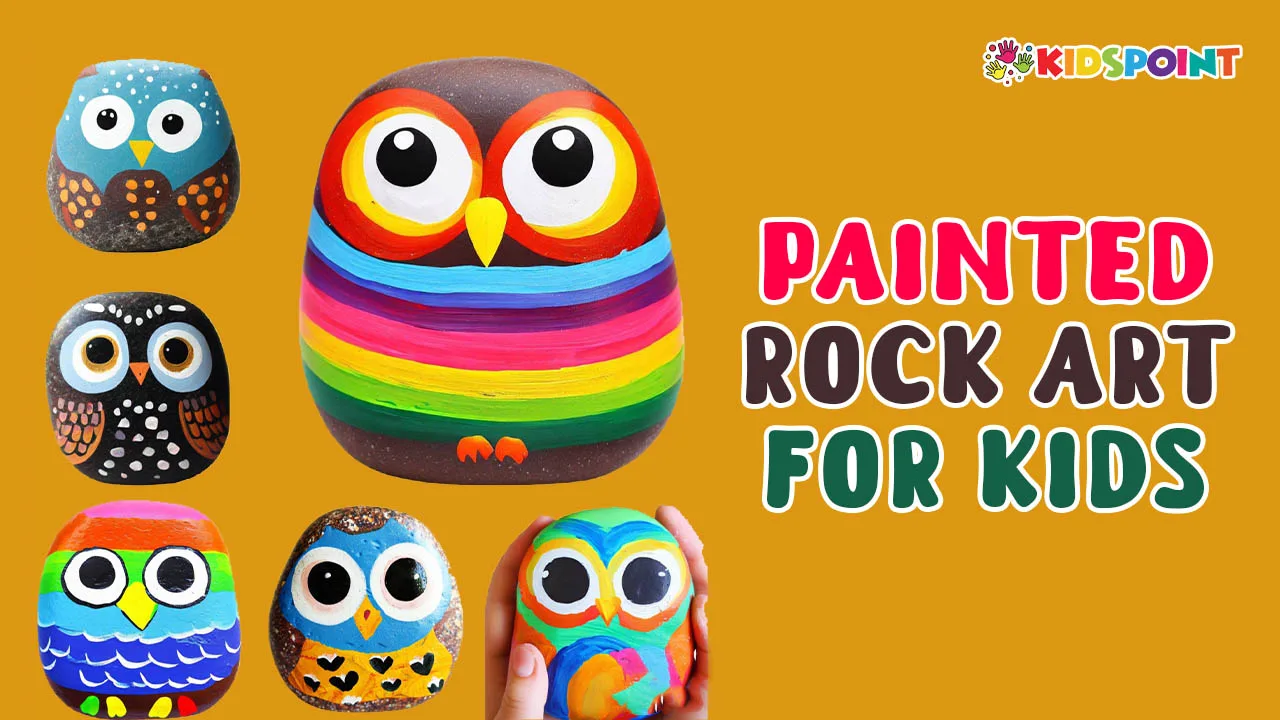In a world filled with screens and digital distractions, finding creative outlets for children has never been more important. Painted rock art offers a refreshing and hands-on activity that engages kids in artistic expression while connecting them with nature. From simple designs to intricate masterpieces, the possibilities with painted rock art are endless. In this comprehensive guide brought to you by The Kids Point, we’ll explore the benefits of painted rock art for kids, provide step-by-step instructions for creating stunning designs, and offer inspiration to ignite your child’s imagination.
The Benefits of Painted Rock Art for Kids
- Creativity: Painted rock art encourages children to think outside the box and express themselves creatively. Whether they’re doodling simple shapes or crafting elaborate scenes, every rock becomes a canvas for their imagination.
- Nature Connection: Gathering rocks for painting provides an opportunity for kids to explore the outdoors and develop a deeper appreciation for nature. It fosters a sense of connection to the earth and encourages environmental awareness.
- Fine Motor Skills: Painting rocks helps improve fine motor skills as children manipulate brushes, mix colors, and apply paint to the surface. These activities strengthen hand-eye coordination and dexterity, essential for tasks like writing and drawing.
- Patience and Focus: Creating painted rock art requires patience and concentration as children carefully plan their designs and execute them with precision. This process teaches perseverance and the value of taking time to achieve desired outcomes.
- Self-Expression: Painting rocks allows kids to express their thoughts, feelings, and individuality in a tangible way. They can choose colors, themes, and motifs that resonate with them, fostering a sense of pride and ownership over their creations.
Getting Started
Supplies Needed
- Rocks: Smooth, flat rocks work best for painting. They can be found in your backyard, at parks, or purchased from craft stores.
- Acrylic Paints: Choose a variety of colors to unleash your child’s creativity.
- Paintbrushes: Different brush sizes allow for varying levels of detail.
- Palette or Paper Plate: For mixing and holding paint.
- Water Cup and Paper Towels: For rinsing brushes and cleaning up spills.
- Sealant (optional): To protect the finished artwork from the elements.
Preparation
- Wash the rocks with soap and water to remove dirt and debris.
- Allow the rocks to dry completely before painting.
- Cover your workspace with newspaper or a disposable tablecloth to prevent messes.
Design Ideas and Techniques
- Simple Patterns: Start with basic patterns like stripes, polka dots, or zigzags for younger children or beginners.
- Nature-inspired: Encourage kids to paint animals, flowers, trees, or landscapes inspired by the outdoors.
- Story Stones: Paint characters or objects on rocks to create story prompts. Children can use these stones to invent imaginative tales.
- Mandalas: Intricate geometric designs can be both calming to create and visually striking.
- Inspirational Quotes: Write uplifting messages or quotes on rocks to spread positivity.
- Stenciling: Use stencils to create precise shapes and designs on rocks.
- Dot Painting: Dip the end of a paintbrush or a cotton swab in paint to create intricate dot patterns.
- Layering: Experiment with layering different colors and textures to add depth to your designs.
Step-by-Step Painting Guide
- Select a rock and envision your design.
- Apply a base coat of paint to the rock using a large brush. Let it dry completely.
- Use smaller brushes to add details and embellishments to your design.
- Allow each layer of paint to dry before adding additional details or colors.
- Once your artwork is complete, let it dry thoroughly before sealing it with a clear sealant if desired.
Display and Share
- Once the painted rocks are dry and sealed (if using sealant), they can be displayed indoors or outdoors.
- Arrange them in a garden, along a windowsill, or on a bookshelf to showcase your child’s creativity.
- Consider hiding painted rocks in your community for others to find and enjoy. Joining local rock painting groups or social media communities can help you connect with other rock painters and participate in rock hiding and hunting activities.
Painted rock art is a delightful and accessible activity that engages children in creativity, promotes outdoor exploration, and fosters a sense of community. Whether they’re painting simple patterns or intricate designs, children can unleash their imagination and express themselves through this timeless art form. By providing the necessary supplies, guidance, and encouragement, parents and caregivers can inspire a lifelong love of art and nature in their children with The Kids Point. So gather some rocks, break out the paints, and let the artistic journey begin!


